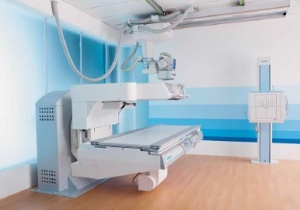by
Nancy Ryerson, Staff Writer | November 11, 2013

The Siemens Luminos Agile
From the November 2013 issue of HealthCare Business News magazine
Sometimes, it’s easy to see when your radiography equipment needs a makeover. Equipment failures, patient backlog and a disrupted workflow are all signs that your room can no longer keep up with your patient load. Determining that it’s time for an upgrade is typically easier than deciding on the ideal solution, whether it’s a full upgrade to DR and wireless flat panel detectors, new CR equipment or a DR retrofit.
Going digital eventually is the goal for most facilities, but if you haven’t converted yet, you’re not alone. According to market research group InMedica, CR equipment made up 53 percent of unit shipments in 2012, though that number is expected to drop to 35 percent by 2017. The flat panel detector market made up 17 percent ofshipments in 2012, and is slated to increase to 24 percent in the next five years. Retrofit kits, which allow facilities to upgrade to DR at up to two-thirds of the price, currently make up six percent of the market, and should rise to 11 percent by 2017. Mobile, another growth area, currently sits at 16 percent and will go up to 26 percent, while film, now at 8 percent, will drop all the way to 4 percent.
But no matter which path you plan to take, it’s always helpful to have a guide. We spoke with radiology directors, biomedical engineers and top vendors to establish the steps you should take to build the right room at the right price.
Step 1: Figure out the lay of the
First, vendors work with customers to tease out what the customer likes about the current set-up and what needs to go.
“No one’s buying radiography and fluoro for the first time,” says Richard Coronado, a marketing executive at GE Healthcare. “They might have overhead tube suspensions or floor-mounted systems. That’s an example of something that generally doesn’t change in an upgrade, because customers like to stick with what they’re used to.”
Next, vendors will ask about the room’s age and reliability. “If their room is clearly old and they’ve been having a lot of problems with it, then we might suggest a completely new room,” says Helen Titus, worldwide marketing director for X-ray solutions at Carestream. “The next question is about the amount of work they have. We may suggest a new analog room and a CR, or an integrated DR room. We don’t want to launch into a solution without quantifying an issue.”
Before making any changes, hospitals that have already taken the leap recommend communicating with other departments to get a feel for what their future plans are in terms of new specialties or star physicians.
